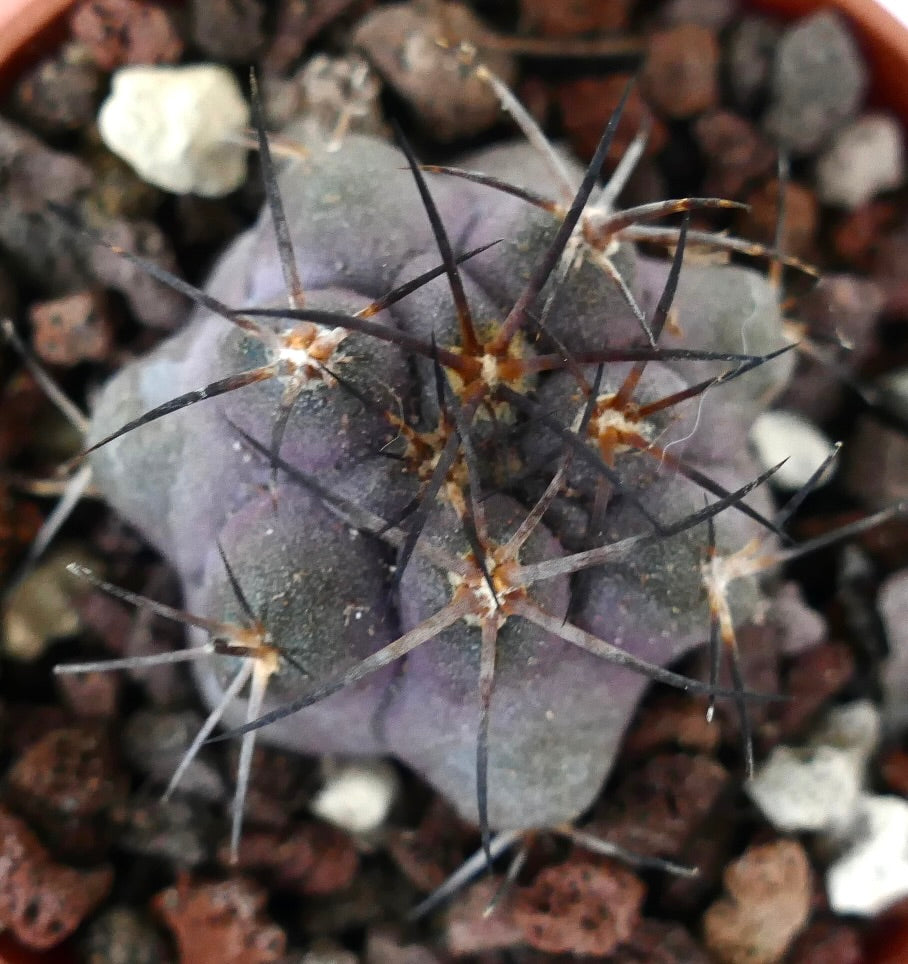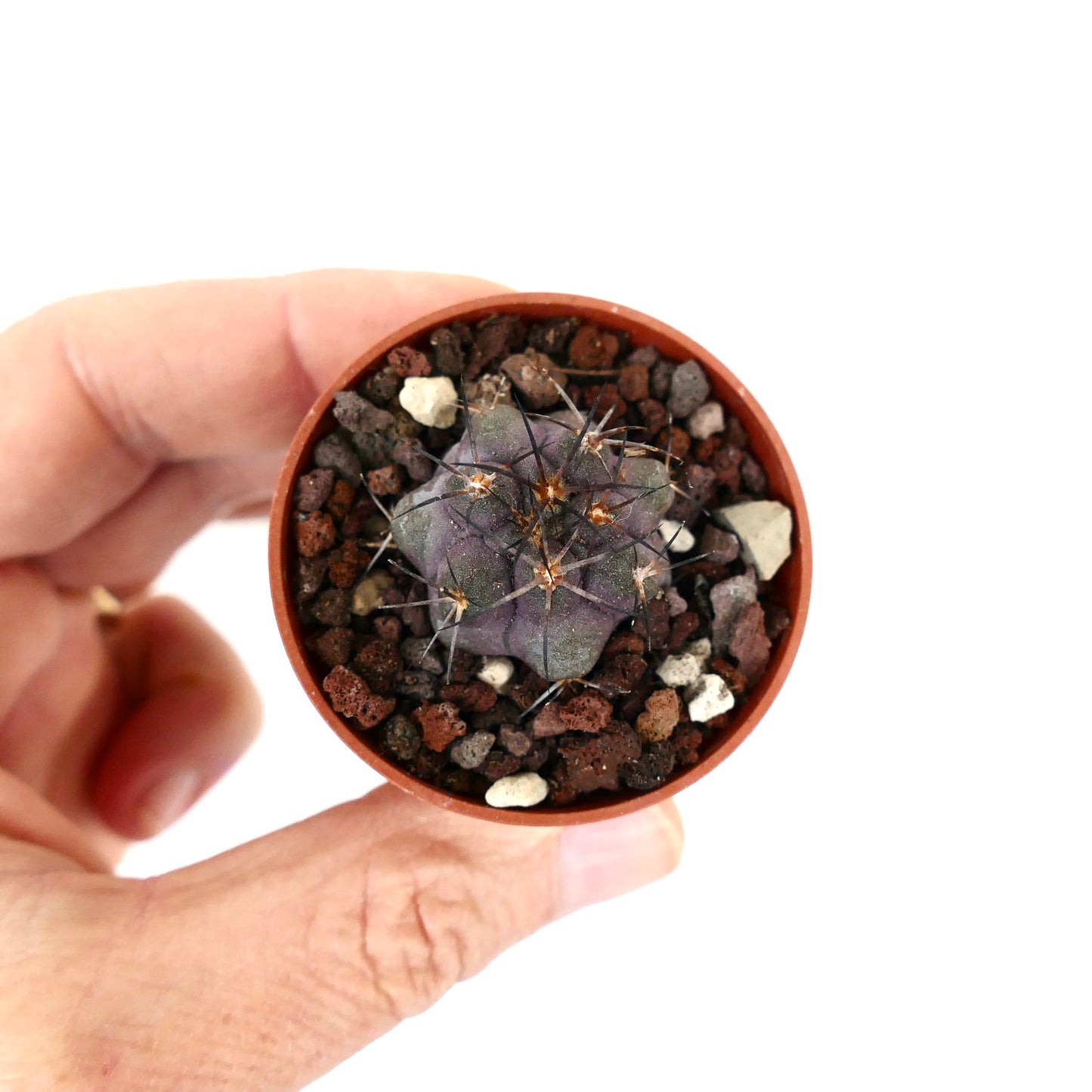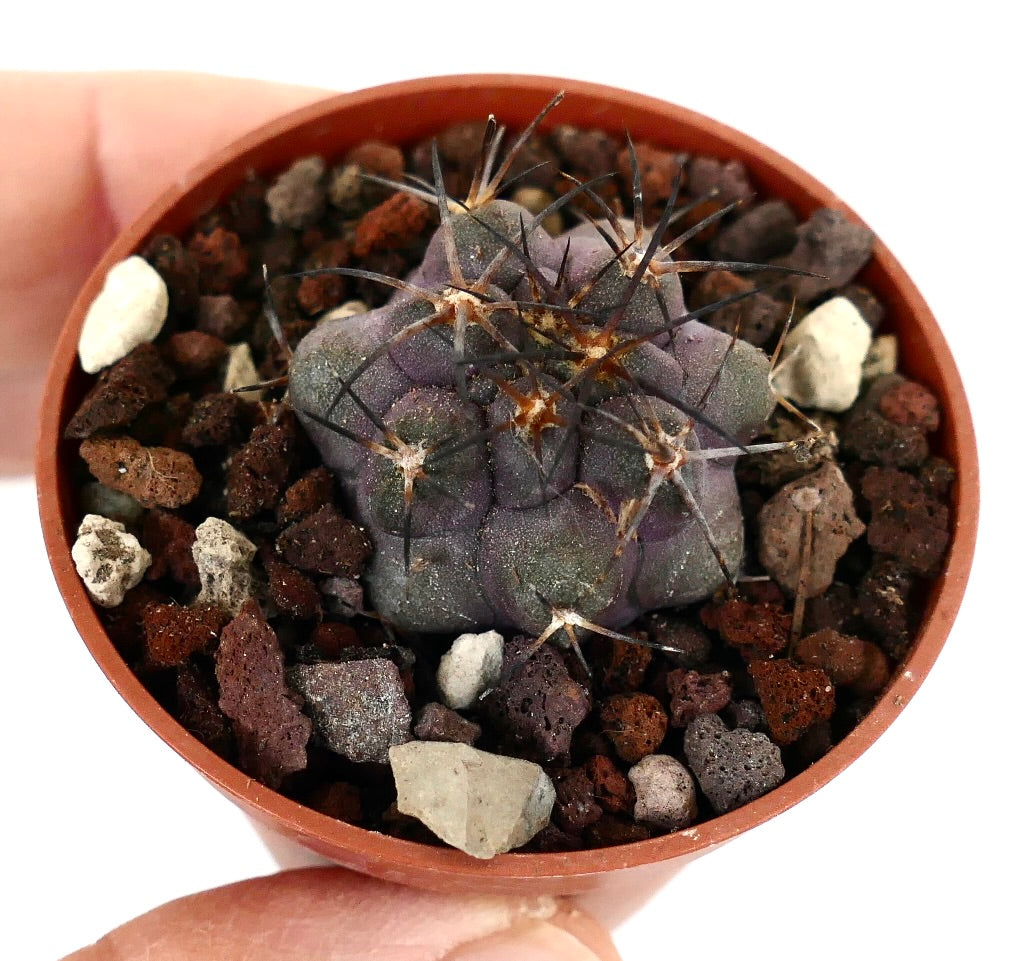Copiapoa griseoviolacea PL3
Copiapoa griseoviolacea PL3
Regular price
€18,00 EUR
Regular price
Sale price
€18,00 EUR
Unit price
per
Tax included.
Shipping calculated at checkout.
Couldn't load pickup availability
Product Description
Copiapoa griseoviolacea is a species of cactus native to Chile, specifically found in the Atacama Desert. It's known for its distinctive appearance and is a popular species among cactus enthusiasts. Here's a detailed description and some cultivation tips:
Description
- Appearance: Copiapoa griseoviolacea is characterized by its spherical to short cylindrical shape. The plants can grow either solitary or form clusters.
- Color: The cactus has a unique coloration, typically grayish to violet, which is where it gets its name 'griseoviolacea' (gray-violet).
- Size: The plants are relatively small, often staying under 10 cm in height, but can reach up to 15 cm in diameter.
- Spines: The spines are variable, often short and black, and can be quite dense, covering much of the plant's surface.
- Flowers: It produces yellow flowers that appear near the crown of the plant. The flowering usually occurs in summer.
Cultivation Tips
- Light: Requires strong light to maintain its compact shape and coloration. In regions with milder sunlight, it can tolerate full sun, but in hotter areas, it may need some afternoon shade.
- Watering: Water moderately during the growing season, but let the soil dry out completely between waterings. In winter, reduce watering significantly to prevent root rot.
- Soil: A well-draining soil mix is essential. Use a cactus mix or create your own with a combination of potting soil, sand, and perlite or pumice.
- Temperature: It prefers warmer temperatures and needs to be protected from frost. Ideal growing temperatures are between 20-25°C (68-77°F).
- Feeding: Fertilize during the growing season with a diluted cactus fertilizer, but avoid over-fertilizing.
- Repotting: Repot every few years to refresh the soil. Be careful with the roots, as they can be fragile.
Propagation
- Propagation is typically done through seeds, as it can be difficult to obtain offsets from this species.
SKU:BA-1817-S
Cultivation
Cultivation
Info and Disclaimers
Info and Disclaimers
Plant height:
Pot diameter:
Picture taken on:








